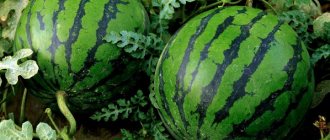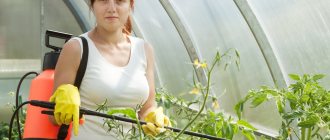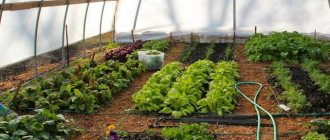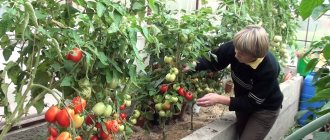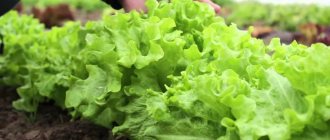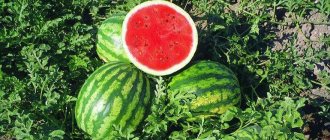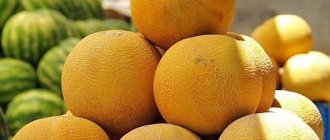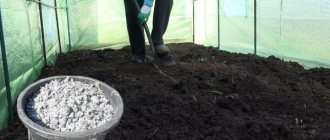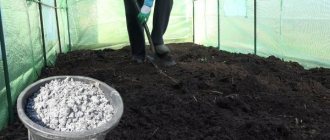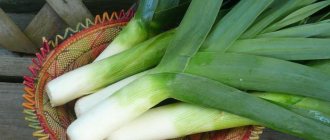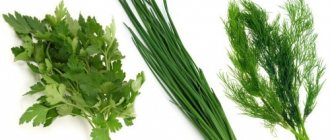Preparing seeds and planting seedlings
In greenhouse conditions, there is high temperature and high humidity, which significantly increases the likelihood of the development of bacterial and fungal diseases in plants. An excellent prevention of such problems will be disinfection of seeds before planting. For this treatment, the seeds are dipped in a light solution of potassium permanganate for half an hour; you can also additionally pickle the seeds in a one percent solution of baking soda.
Treated seeds are soaked for 12 hours in warm water to germinate. Every 4 hours, the planting material should be lightly ventilated, which ensures its excellent germination rates. For seedlings, large containers with a diameter of at least 8 centimeters are usually used.
You can also use peat pots of suitable size, which prevents damage to plants when transplanting them into open ground.
The containers are filled with nutritious soil, which is prepared by mixing garden soil, peat, humus and sand in equal parts. 3-4 seeds are planted in each pot, and subsequently the plantings are thinned and only the strongest shoots are left. Containers with seedlings are placed on a well-lit windowsill. In mid-April, which is considered the best time for planting melon seedlings, the daylight hours are already 10 hours or more, so additional illumination of the plants is not required.
You can transfer seedlings to the greenhouse as soon as they have five true leaves. Immediately before planting the melon in a permanent place, the top of the seedlings is pinched off, which stimulates the formation of lateral layers.
A prerequisite for obtaining a good melon harvest in a greenhouse will be the correct determination of the timing of planting seedlings. Typically, 5-7 weeks pass from the appearance of the first shoots to the transfer of plants to open ground, depending on the specific variety.
Watering melon seedlings is done once a week. These are drought-resistant plants that, when the soil becomes waterlogged, begin to get sick and become stressed. When using ordinary garden soil for planting seedlings, it will need to be fertilized twice, for which universal mineral compounds are used.
It is not recommended to use organic matter to feed seedlings, as this may slightly worsen subsequent melon yields.
"Altai"
Well-known, early ripening variety. The fruits ripen 64-76 days after emergence. A medium-sized, medium-sized plant with many small, pentagonal-shaped leaves. The leg is small and inclined.
The weight of one melon is from 0.9 to 1.5 kg. The shape of the fruit is oval or short oval. The outside of the peel is smooth and slightly segmented. The color of the fruit is lemon-yellow or orange-yellow. There is no pattern on the surface, a mesh pattern of different densities, with small cells, is soft. The crust is not hard. The fruit pulp is white or light orange in color and smells pleasant.
“Altai” melon is poorly stored and transported.
Fertilization and watering
Feeding melons in the greenhouse is mandatory, otherwise the plants develop poorly and bear little fruit. A week after planting the seedlings, the plants are fed with a light solution of ammonium nitrate, and three weeks later, complex mineral fertilizer is applied again. When grown in soil poor in microelements, melon should be fed in a greenhouse with ammonium nitrate every week. After the first ovaries appear, you can use a universal fertilizer for tomatoes, which is applied to the soil every two weeks.
Excess moisture can be detrimental to melons, so such plants should be watered very carefully. Under no circumstances should water get on the stems and leaves. Usually, to simplify watering, gardeners make small grooves in the ground, into which they lower a hose and fill them with water. This allows you to evenly moisten the soil without allowing excess moisture. For irrigation, warm and settled water must be used. During the period of mass flowering, in order to attract pollinating insects, plants can be sprayed with sweet syrup from a spray bottle.
"Lada"
It has an average ripening period; a ripe crop can be harvested in 73-95 days. The plant has a main vine of short length and many additional ones. A slightly dissected leaf plate of medium size, green in color.
The fruit is round, with a yellowish, smooth skin. There are no patterns or designs on the surface. Melon weight is 1.6-2.1 kg. The fruits do not crack. The pulp has excellent taste. It is crispy and juicy, creamy in color. The aroma is not very pronounced.
Valuable qualities of the species: not susceptible to peronospora, aphids and powdery mildew.
Growing a melon
One of the gardener’s tasks when growing melon in a greenhouse is the correct formation of plants. This allows you not only to harvest a good harvest, but also saves space in the greenhouse. Each plant is left with a main powerful stem and two or three lateral shoots. All other stepsons must be deleted. The fruiting vine should be pinched at a distance from the first leaf from the top, which stimulates the formation of new ovaries.
The main stem should be pinched as soon as it reaches the ceiling of the greenhouse or the top of the trellis. The growing stems will entwine the ropes of the trellis, thereby forming the upper tier, on which active flowering begins. All fruits that form must be tied up, placing them in special mesh bags. Plants simply will not be able to hold large melons on their own, which will lead to their damage.
"Collective farmer"
Has an average ripening period. Ripe fruits can be harvested 76-96 days after germination. The plant is not very large in size, with long vines and a thin stem. The size of the leaf plate is medium, the shape is round, slightly concave.
The fruit is small, spherical in shape, weighs 0.75-1.4 kg. The peel on top is smooth, yellowish-orange in color, without patterns or spots. The melon can be covered with a mesh pattern or coarse mesh. The crust is of medium density and thickness. The fruit pulp is white, fibrous, crispy. The taste is very sweet and juicy.
Melon ripens on a stalk and has good resistance to various viruses.
It is important to know! The hard peel and dense pulp make it possible to transport the fruit over long distances. After the harvest is collected from the garden, it can be stored for 7 days.
The fruits tolerate exposure to sunlight well. The pulp remains intact, even if the peel is damaged by the sun. “Kolkhoznitsa” tolerates low temperatures well, therefore it is the best variety of melon for open ground.
Melons of this species are often affected by powdery mildew and anthracnose.
Advantages of the variety:
- the plant is resistant to bacteriosis;
- The fruits tolerate transportation well.
Harvesting
Harvesting occurs as the fruits ripen. The ripeness of a melon can be determined by the appearance of a ring-shaped crack in the area where the tail adjoins.
Ripe fruits are carefully cut with a sharp knife without damaging the skin. The harvested crop should be stored in the refrigerator, but remember that melons do not have a very good shelf life, so after a few weeks they will lose their sweet, juicy taste. You can also cut a slightly unripe melon, which is subsequently sent to a warm room for ripening.
"Torpedo"
The ripening period for Torpedoes is average. The plant's wattles are dotted with green, dissected, medium-sized leaves.
The melon has an oblong shape. The peel is smooth, grayish in color, decorated with a mesh pattern.
Weight varies from 2.6-5.9 kg. The fruit pulp is white with a greenish tint, the taste is tender, melting and juicy.
The fruits are stored for 15-19 days, without changing their taste and aroma.
C1kW.m yield is 1.85 kg.
Video about shaping and caring for melons in a greenhouse
The video talks about the formation of melon in a greenhouse and further care of the crop. It clearly shows how to tie a melon. We recommend watching the video!
Melon is a southern, heat-loving, sweet, tasty fruit that can be successfully grown in greenhouses in the middle zone. It is only necessary to choose the right varieties to use, take into account all the technology to grow seedlings and promptly transfer them to greenhouses and hotbeds. All the gardener will need to do is regularly apply fertilizer, tying up the plants and correctly forming the vine growing upward.
"Caramel"
Mid-early hybrid variety, ripening in 63-67 days. It is distinguished by the appearance of a large number of lashes. The leaves are green and medium in size, slightly dissected.
The shape of the fruit is oval, the outside is smooth, rich yellow in color. The peel is covered with a dense mesh pattern. The weight of one melon varies from 1.3 to 1.9 kg. The color of the pulp is soft cream. It has a wonderful juicy and delicate taste, as well as a pleasant rich aroma.
It tolerates transportation well and too wet soil, and is not susceptible to fusarium.
"Temryuchanka"
It has a mid-season ripening period, the fruits can be removed from the garden after 71-96 days. The climbing stems are covered with green, slightly dissected, medium-sized leaves.
It has a round shape. A ripe melon is covered with a dark yellow skin with a dense mesh pattern. Outside – wrinkled, weakly segmented. The weight of the fetus varies from 1.5 to 2.2 kg. The flesh is creamy in color and has a delicate, sweet, aromatic taste.
Attention! It tolerates transportation well and is stored for 26-30 days.
"Zlato Scythians"
A hybrid variety characterized by mid-early ripeness. After 71-81 days, the ripe crop can be harvested. The plant has a climbing stem. The leaves are medium-sized, light greenish, slightly dissected, highly toothed with small waves.
The outside of the fruit is round in shape. The bark is yellow, covered with a thin mesh pattern. Medium sized seed nest. The placenta is located in the center. The fruit pulp is creamy and melts in your mouth. The taste is juicy, sweet and aromatic. The weight of one melon is 1.2-1.4 kg.
A variety from 1 sq.m of plot can produce about 6 kg of fruit.
Advantage:
- a bountiful harvest;
- excellent taste of the pulp;
- resistance to powdery mildew.
In the first half of April, it is recommended to add seeds of this variety to seedlings. After 31-36 days, the shoots can be planted in the greenhouse. The variety is suitable for growing under covering material and for greenhouses. The diagram for planting one plant is 70x150 cm. You should not water the seedlings frequently to avoid increased soil moisture. The plant should be watered with extreme caution during the period of fruit ripening.
It is recommended to run the wattles along a trellis to make the task of caring for and harvesting easier. When the stem grows more than 55 cm, it will be necessary to rid it of all shoots. Also, the pruning procedure must be carried out on the stem, in the segment between the first and third leaves.
"Tamanskaya"
Belongs to early ripening varieties. After 54-81 days, ripe fruits can be collected from the garden. The climbing stems of the plant are of medium length. They are covered with many slightly dissected leaves of medium size, green in color.
The fruit of early melon has an oval shape. The peel is yellow in color and covered with a medium-density mesh pattern. The seed nest is large, the structure is open. The cut crust is creamy and thin. The pulp is juicy, grainy and tender, of medium thickness and creamy in color. The weight of one melon is 0.6 - 1.4 kg. It has a pleasant taste.
Advantage: tolerates transportation well.
Recommended varieties by region
Varieties for growing in any region : Sprint, Sphinx, Seledyn, Tiger, Timiryazevskaya rannyaya, Ozhen, Octavia, Autumn Joy, Ophelia, Turkish Delight.
for central Russia , including the black earth region: the Kolkhoznitsa variety (for the Central Black Earth, North Caucasus, Middle Volga, Lower Volga regions).
In the Northwestern, Central, Volga-Vyatka, Central Black Earth, and Middle Volga regions, it is recommended to grow the Princess Svetlana melon. The variety is also well suited for the Moscow region.
For the Urals : Babor, Altai, Zimovka, Lesya, Kolkhoznitsa, Temryuchanka, Original.
For Siberia : Lolita, Altai, Tender, Collective Farmer, Rosinka.
"Cossack"
A variety of mid-season varieties, for the fruits to fully ripen, 71-96 days must pass after germination. The stem of the plant is climbing and thin. The leaves are strongly notched, medium-sized, kidney-shaped.
The fruit is oval in shape and weighs from 1.3 to 1.9 kg. The peel is smooth, slightly segmented, rich yellow in color, without a mesh pattern or other types of patterns. The dense bark hides the white, fibrous, slightly crunchy, sweet and juicy flesh.
“Cossack” is susceptible to powdery mildew and anthracnose.
"Dune"
Belongs to an early ripening species, ripens 59-76 days after full germination. The plant has many climbing stems. The leaves are green, medium and slightly dissected.
The shape of the melon is oval. The peel of the ripe fruit is yellow, covered with a continuous mesh pattern of medium density. The weight of one melon is 1.5-1.8 kg. The dense crust hides the grainy, tender, dense, juicy and aromatic flesh. Inside are ivory-colored, oval-shaped, small seeds.
Advantages: tolerates transportation well.
